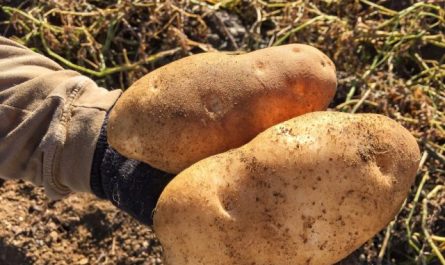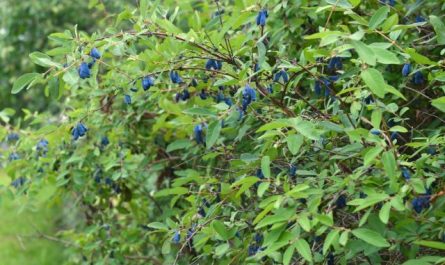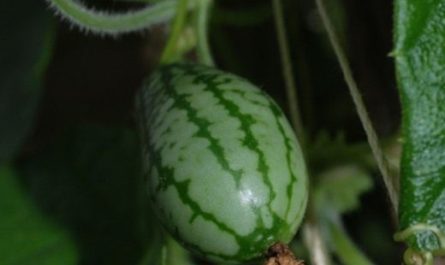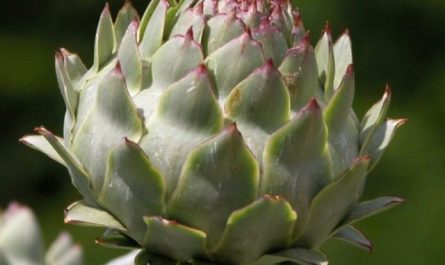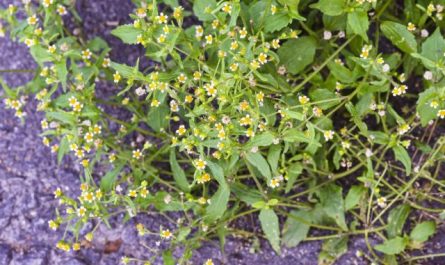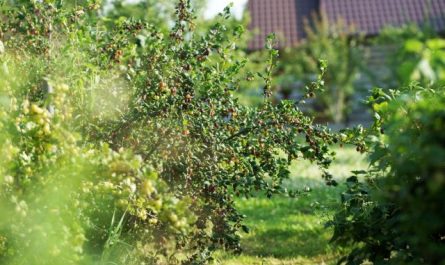In gardening, blueberries are more often called Blueberries, found in all temperate and cold regions of the Northern Hemisphere, and Highbush blueberry, which originates from North America. The latter species is widely grown as a fruit and ornamental crop. Both of these species belong to the genus Vaccinium (Vaccinium) of the Heather family (ericaceae). In addition to blueberries, this genus includes many popular berry plants – lingonberries, cranberries, and blackberries.

Other common and local names for blueberries (or their berries): vodopyanka, golubets, golubitsa, gonobob, gonobobel, gonoboy, gonobol, durakha, durnika, durnikha, durnitsa, drunken berry, drunkard, drunkard, drunkard, drunkard, blue grape, blue tit.
In Russia, one species is found in nature – Blueberry, but it is not widely distributed in culture. In literature, the Russian version of the name Blueberry (Vaccinium uliginosum) also found: marsh blueberry, bog blueberry, lowbush blueberry.
Several species of blueberries grow in the wild in the United States and Canada, but breeders have turned their attention to the Highbush Blueberry (Blueberry corymbose, or Highbush Blueberry, or Blueberry corymbose) (Vaccinium corymbosum), and there are currently 45 varieties in the United States. Recently, these varieties of garden blueberries have been in the spotlight of Russian amateur gardeners.
Highbush Blueberry Varieties
Unlike wild blueberries, the fruits of garden (cultivated) blueberries contain much more vitamin P and carotene. A beautiful appearance and a pleasant sour-sweet taste of relatively large berries, a good harvest (from 6-8 year old plants – up to 2-2,5 kg) characterize this berry crop.
Ninety years ago, the Brooks variety was selected from a wild species of corymbose (high-growing) blueberry in North America. The following year, another variety of garden blueberry was obtained from another species of low blueberry – Russell, low-growing, frost-resistant, early-ripening. Crossbreeding both varieties gave good results, then a third species was added – southern blueberry. As a result of crossing, valuable varieties were obtained: Pioneer, Kaboti, Katarina, Rubel.
In the Moscow region, the most promising varieties of North American garden blueberries are: Dixie, Jersey, Rancocas, Weymouth. These varieties bear fruit annually, forming large multi-berry clusters, and overwinter satisfactorily. The size of the berry of highbush blueberries reaches the size of a small-fruited cherry.
Most varieties of garden blueberries can be grown in other regions of the middle zone. They bloom and bear fruit annually. Annual shoots grow from the root collar. The growth of adult branched branches is small. In the first years of life, highbush blueberries produce only a few small berries.

Soil for garden blueberries
The soil for tall blueberries should preferably be permeable, acidic, loose, peaty-sandy. Gardeners who do not take this into account and plant blueberries in heavy clay soil are often dissatisfied with the growth and development of plants. The optimal level of groundwater is 40-60 cm from the surface of the earth. Under the condition of gradual and frequent watering, groundwater can be much deeper.
The main thing for garden blueberries is the presence of acidic soil (pH within 3,8-5). Favorable soil conditions can be judged by indicator plants such as horsetail, sorrel, mint. Even with a pH of about 6, blueberries grow slowly, not to mention neutral, and especially alkaline soil.
If the soil on the plot is very ordinary, that is, not acidic, then 0,5-0,6 buckets of soil are taken out of a planting hole 1-5 m deep and 6 m in diameter, the hole is insulated with boards, polyethylene or pieces of tin and filled with acidic peat. If there is not enough peat, sawdust, wood chips, bark, or even better, partially rotted pine-spruce needles from the nearest forest are added (no more than a third of the total mass). Good results are obtained by growing garden blueberries exclusively in a substrate of rotted sawdust. It is useful to mulch the soil with a thick layer (7-15 cm) of the same sawdust, wood chips or sphagnum moss after planting the plants, which helps to retain moisture and suppresses the development of weeds.
There is another option for acidifying the soil: a year before planting garden blueberries, add powdered sulfur to it (250 g per 1 m3 soil) or add mineral fertilizers such as ammonium sulfate, ammonium nitrate, urea, potassium sulfate, nitroammophoska. The first two are added no more than 20 g per square meter, the latter – half as much. The main thing is not to overdo it with the doses.
There are many recipes for planting garden blueberries, but the simplest and cheapest is to bring sawdust, let it rot, lay it in the garden in a layer of 40-50 cm, or form a ridge and plant blueberry bushes in it 80-90 cm apart in a row and 2 m between rows.

Planting garden blueberries
Highbush blueberries are usually sold in small containers with peat. Seedlings with an open root system take root very poorly. The reason lies in the symbiosis of blueberries with a saprophytic fungus, which helps the plant absorb the necessary nutrients from the soil. Greenhouses often offer tiny plants with non-woody bluish shoots. Such delicate plants inevitably freeze at the first serious cold snap when planted in the ground. In the spring, of course, new branches can grow instead of the dead ones, but it is better to keep the immature seedlings in the basement at a low positive temperature until the next warm season or, at worst, place them on the brightest windowsill in the room.
If there is a central heating radiator under the window, drying out and overheating the surrounding air, a simple protective screen should be constructed between it and the plants – from a piece of plywood or cardboard and, if possible, the air humidity should be increased. Garden blueberries that have overwintered indoors are planted at the end of May, when the threat of the last frosts has passed. They are placed at a distance of one and a half to two meters between plants.
Garden blueberries can be successfully grown in a wooden box, barrel, large ceramic or even plastic pot with good drainage from a layer of expanded clay or small stones. Very little peat is required for such containers – exactly according to their volume. Economical and beautiful. It is no coincidence that abroad, graceful plants with bluish foliage, planted in pots, decorate verandas, terraces, loggias. They are also placed at the entrance to the house. (However, with this technology of growing in the conditions of central Russia, a small problem arises. For the winter, the container must either be buried in the ground or removed to a frost-free room).

Caring for garden blueberries
When cultivating the soil, it is necessary to take into account that the blueberry root system is superficial and is located in the 15-centimeter upper soil layer. Therefore, the plants are very responsive to annual mulching with peat with a layer of up to 5 cm, application of nitrogen fertilizers and watering. Garden blueberries respond well to annual early spring bush formation: cutting out old branches at the soil surface level, cutting out weak shoots, as well as rejuvenation in the crown of perennial wood, sanitary pruning, etc.
During rejuvenating pruning of old branches for reverse growth, annual shoots are formed at the very surface of the soil – the so-called formation shoots, the sizes of which reach 0,5-1 m. Branching shoots formed on perennial branches in the crown zone differ slightly in their growth and are equal to 9-10 cm. The size of the berries and the yield depend on the variety grown.
Propagation of highbush blueberries
Garden blueberries are propagated by seed and vegetatively. For seed propagation, seeds are selected from full-fledged berries collected from fruitful and healthy bushes. The squeezed seeds are slightly dried and sown in late autumn in pre-prepared beds filled with acidic peat and fertilized. For spring sowing, the seeds are stratified for 3 months. The seeds are sown in furrows to a depth of 1 cm, the bottom of which is slightly compacted with a board. The seeds are covered with a substrate of sand and peat in a ratio of 3:1. The seeds germinate well at a soil temperature of 23-25 C and a soil moisture of about 40% of the soil weight.
Care for seedlings consists of constant loosening of the soil, weeding, and moisturizing watering. To accelerate the growth of blueberry seedlings in the second year, starting in the spring, they are fed with nitrogen fertilizers. For 2 years, seedlings are grown in the sowing place. Then they are dug up and planted for further growing in a school, where they are given a large feeding area. Grown seedlings are transplanted to a permanent place in the garden after 1-2 years, but it would be good to conduct a preliminary individual selection of promising seedlings in the school based on productivity and other characteristics.
Often, amateur gardeners, finding high-yielding bushes in natural conditions, transplant them into their garden. It is better to transplant root shoots, part of the bush or prepared rhizome cuttings, and not the entire bush. Part of the dug out bush can be cut into separate shoots with rhizomes 5-7 cm long. Garden blueberries are also propagated by rhizome cuttings, which are prepared in late autumn, after the leaves have fallen, or early in the spring. The length of the cutting is from 7 to 15 cm, the larger the diameter, the faster it forms growth and a root system.
To improve survival, the cuttings are exposed to positive low temperatures (from 1 to 5 °C) for a month. After that, they are planted in a loose substrate of sand with peat 3:1 (at an angle) and sprinkled with a 5-centimeter layer of the same substrate. With good care, after 2 years, sufficiently developed seedlings grow, they are transplanted to a permanent place in the garden. Vegetatively propagated seedlings begin to bear fruit in the fourth year, seedlings – in the seventh or eighth.
With a significant volume of reproduction of valuable varieties of garden blueberries and in order to increase the multiplication coefficient, mainly cuttings with green and woody cuttings are used. When propagated by cuttings, the following varieties take root relatively easily: Blueray, Coville, Herbert, Rancocas, Scammel, Dixie, Early Blue and Blue Prop (70-97%). Berkeley, Atlantic and No. 13 take root poorly (40-50%).

Types of Blueberries
Blueberry (Vaccinium uliginosum)
In natural conditions, blueberries grow in forests, swampy or rocky tundra on poor acidic soils – screes, hummocks of swamps, in the mountains to the mountain tundra belt, in the south in the upper mountain belt, the European part of Russia from the Arctic regions to Ukraine, as well as in the alpine zone, the Caucasus Mountains, the Urals, Siberia and the Far East, rising in the mountains to a height of up to 3 thousand meters above sea level. Within the species, several subspecies are distinguished, each of which grows in its own ecological and geographical region. It is protected in reserves.
Blueberries have a very wide ecological amplitude: they can grow on damp, swampy soil and on dry mountain sites, and grow better in lighted areas than in shaded areas. They are more cold-resistant than lingonberries and blueberries, and do not suffer from spring frosts. Blueberries are oligotrophs, and can grow on very poor and very acidic soils. They respond positively to the application of superphosphate and the burning of thickets, increasing the yield.
Highbush blueberry (Vaccinium corymbosum)
Native to North America. Grows in swamps and damp places. In its homeland, it is a full-fledged garden crop: it is grown on industrial plantations, planted in garden plots, near houses. In the northern states of the USA and in Canada, blueberries are more popular than black currants. This circumstance is easily explained – the berry is very tasty and beautiful. American blueberries are called highbush because they grow up to two meters.
The plant blooms in the third year after planting. The diameter of the berry is from 10 to 25 mm. The yield in the USA is 10 kg per bush, in Russia, with a shorter cool summer – from 0,5 to 7 kg. Not all foreign varieties are suitable for the middle zone, but mainly early and mid-season varieties. Late varieties ripen only 30%, unless, of course, they are grown in a greenhouse.

Coville blueberry (Vaccinium covilleanum)
Garden blueberries are obtained as a result of hybridization of three North American species of blueberries and are grown on industrial plantations for the purpose of obtaining berries almost all over the world, including Russia. Currently, there are more than 100 varieties of blueberries of different heights and different ripening periods. This is a perennial and long-lived deciduous shrub with a height of 0,7 to 2,5 m (depending on the variety), with large, 1,5-2,2 cm in diameter, very tasty sweet and sour, blue berries collected in clusters.
The yield from one bush is from 2 to 8 kg. It grows well both in the sun and in partial shade, but bears fruit abundantly only with good lighting. In addition to a heather garden, it can be planted as an undergrowth under tall conifers, and also used for a hedge. It is distinguished by good winter hardiness, but in severe snowless winters it can freeze without shelter.

Blueberry Diseases and Pests
In all countries where highbush garden blueberries are grown, the main disease is considered to be shoot blight (stem cancer), caused by the fungus Godronia cassandrae (imperfect stage – Fusicoccum putrefaciens Shear). The disease causes the death of young plants and the dying off of individual shoots in older ones, as well as a significant reduction in yield. The first signs of the disease appear in winter, most often on the last growths. In the area of leaf scars and on the shoots themselves, small reddish spots appear, which then increase in size, become oval, chestnut-brown, encircle the shoot and cause it to die.
Slowly expanding ulcers covered with peeling bark form on old shoots. The leaves of diseased plants acquire a bright reddish-brown color long before the autumn change in leaf color. In summer, the fungus forms round brown spots with a bright crimson-red halo on the leaves. In order to combat the disease, first of all, avoid planting plantations in areas with excessive moisture, as well as applying too high doses of nitrogen fertilizers. In addition, constant pruning and burning of affected shoots is carried out.
If you do not conduct timely observations and control diseases and pests, they can greatly damage garden blueberry bushes and lead to a significant reduction in yield. Blueberries are distinguished by diseases caused by parasitic fungi and viruses. About 70 species of fungi parasitizing blueberries and cranberries have been noted.
Of these, the most harmful to garden blueberries are the following:
- Godronia cassandrae – causes a disease called stem canker
- Septoria albopunctata – causes leaf spot
- Phyllostictina vaccinii – severely damages berries
- Gleocercospora inconspicua – causes leaf spot
- Monilinia vaccinii – causes twisting of young shoots and flowers, as well as mummification of berries
- Microsphaera ami (mildew) – causes a white coating on the surface of leaves
- Pucciniastrum myrtylli (rust) – develops in the form of epiphytoties and causes premature leaf fall
- Pucciniastrum goeppertianum – causes “witches’ brooms”
- Phylospora corticus – the causative agent of stem cancer
- Phomopsis vacinii – causes branch dieback
- Botritys cinerea – attacks flowers, fruits and leaves in periodically foggy weather
- Exobasiduum vaccinii – causes hypertrophy and bright red color of infected flowers, fruits and leaves
Measures to combat the listed pathogens of fungal diseases include treatment with available fungicides during the growing season.
The following viral diseases are noted:
- Viral dwarfism – causes dwarfism of bushes and formation of small yellow leaves in summer
- thready branch spot – causes red streaks on young branches
- Red ring spot – red ring spots appear on older leaves. One of the most dangerous blueberry diseases in the US
- necrotic ringspot – causes chlorotic spots that later develop into holes, greatly weakens growth and promotes drying of branches
- mosaic – leaves acquire a yellowish mosaic color
- Cord-like virus is one of the most dangerous diseases of blueberries in Michigan. The latent period lasts about 4 years, then the growth of plants slows down, the color of the leaves changes, and stripes resembling laces appear on the shoots. Due to the difficulty of detecting this disease, blueberry production in Michigan and in the United States as a whole is under threat.
Measures to combat viral diseases: destruction of diseased plants and burning of infected areas, as well as selection of varieties resistant to the disease.



